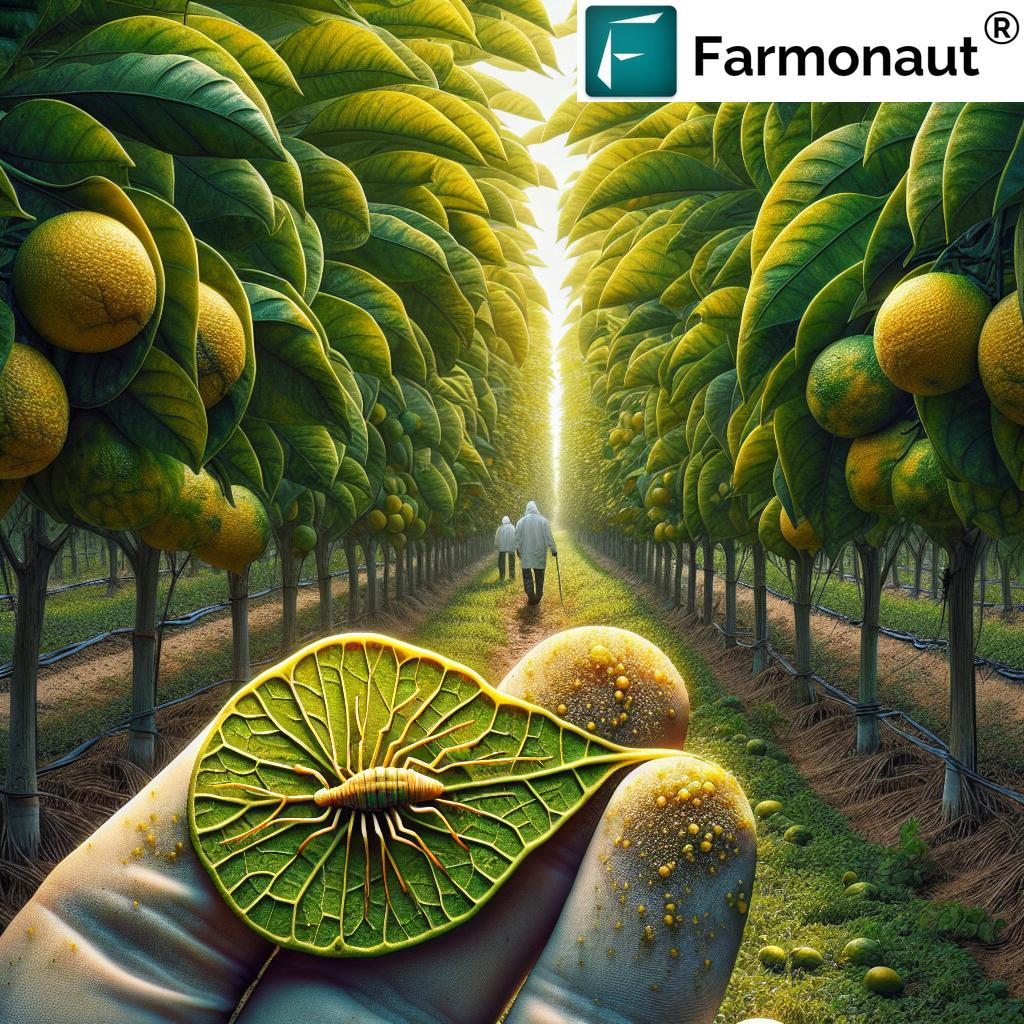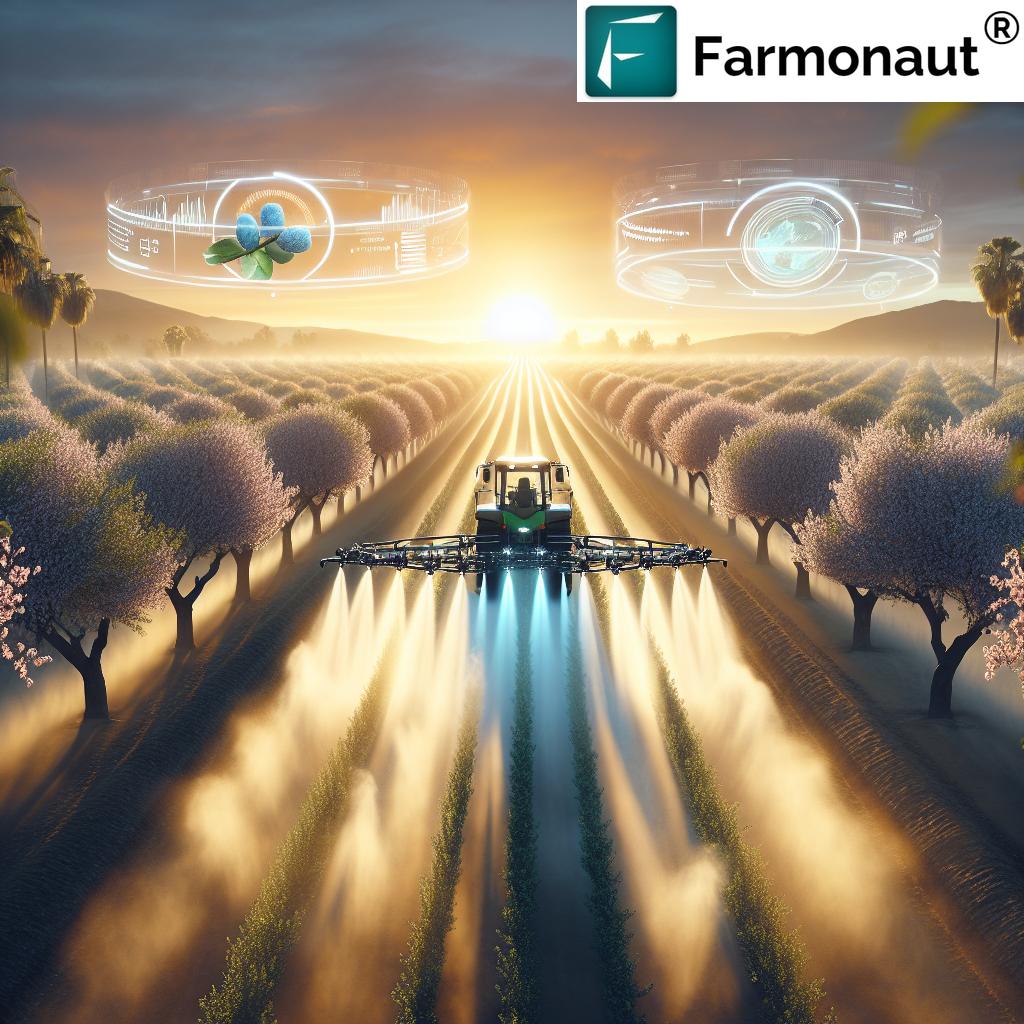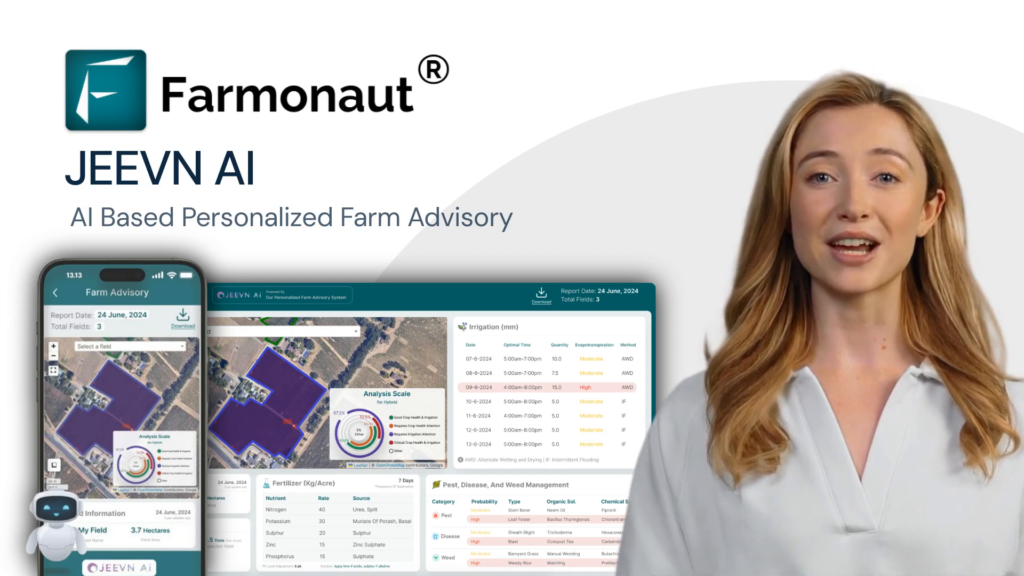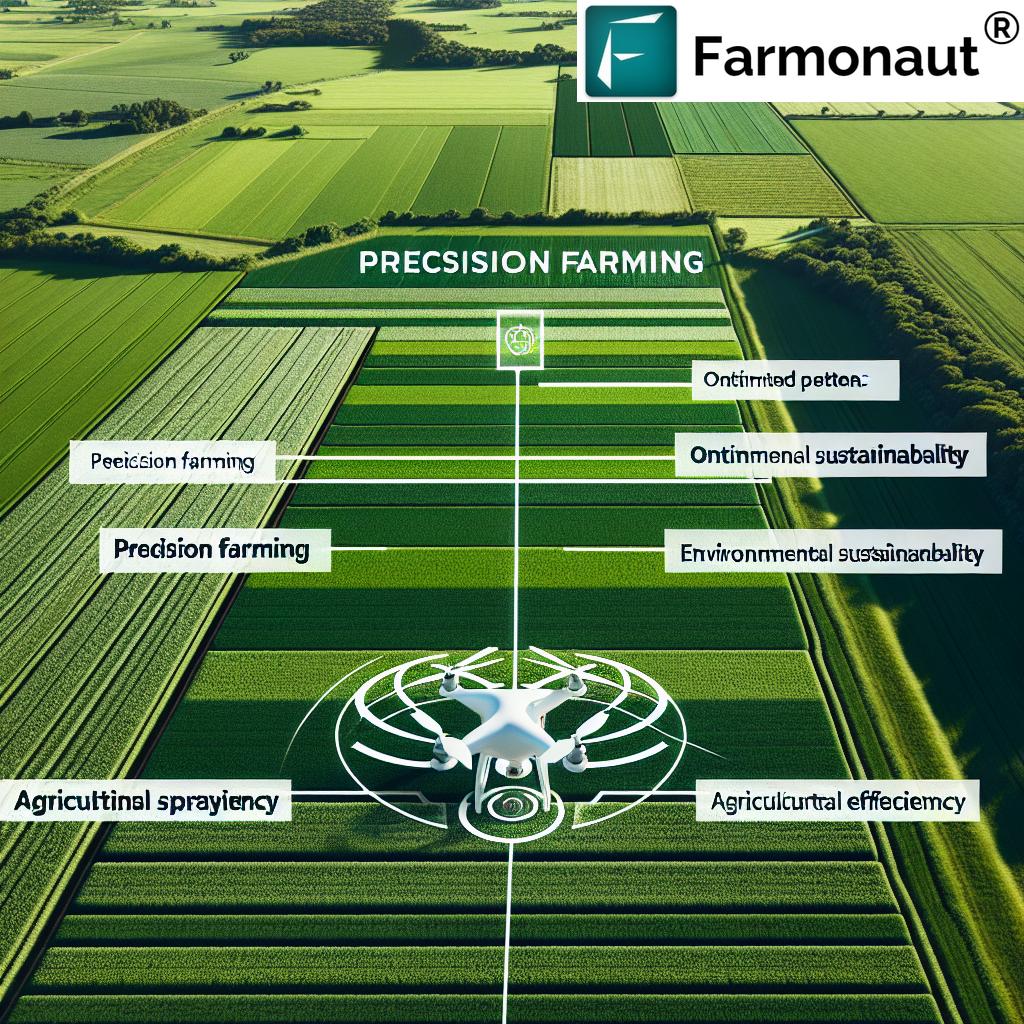Timber Harvesting Illinois: 7 Secrets Landowners Must Know
Table of Contents
- Introduction: Sustainable Timber Harvesting in Illinois
- Secret 1: Develop a Comprehensive Forest Management Plan Illinois
- Secret 2: Timber Stand Improvement—Boost Forest Health and Value
- Secret 3: Legal and Regulatory Compliance for Timber Sale Process Illinois
- Secret 4: Best Management Practices Forestry Illinois—Protecting Land and Water
- Secret 5: Economic Considerations & Working with a Consulting Forester
- Secret 6: Forest Certification for Better Timber Markets
- Secret 7: Invasive Species Management Illinois Forests
- Extra: Firewood Regulations, Pests, and Forest Stewardship Incentives
- Farmonaut for Sustainable Timber Practices
- Comparison Table: Sustainable Timber Harvesting Practices in Illinois
- Frequently Asked Questions (FAQs)
“Illinois forests cover over 4.8 million acres, with sustainable timber harvesting supporting 60,000 jobs statewide.”
Introduction: Sustainable Timber Harvesting in Illinois
Timber harvesting in Illinois is a multifaceted process—rooted in the principles of sustainable forest management, legal compliance, and economic opportunity. With about 95.9% of Illinois’ forestland privately owned, the stewardship of our forests largely rests in the hands of landowners like us.
But success in transforming our forest into a resilient, valuable resource isn’t just about felling trees. It’s about implementing best management practices (BMPs), using data-driven plans, protecting our soil and water, improving timber quality, and ensuring our actions today do not compromise the vitality of our land for future generations.
In this comprehensive guide, we unveil the 7 secrets every landowner must know for successful, legal, and sustainable timber harvests in the Prairie State. From crafting a robust forest management plan Illinois, boosting forest health through Timber Stand Improvement, and working within legal frameworks, to facing challenges like invasive species management and new technologies, we’ll cover it all.
Secret 1: Develop a Comprehensive Forest Management Plan Illinois
Timber harvesting in Illinois is most effective when anchored in a comprehensive forest management plan. This blueprint isn’t a one-size-fits-all model; rather, it’s personalized to our landowner objectives, our land’s unique composition, and our vision for the future of our forest.
Key Elements of a Forest Management Plan
- On-site inventory of current growing stock and tree species
- Soil data collection and analysis
- Assessment of forest stand age, species diversity, structure, and health
- Review of landowner objectives — such as income, habitat, recreation, or conservation
- Recommendations for stand improvements (thinning, weeding), harvests, and regeneration plans
Why a Management Plan Matters in Illinois
Approved forest management plans can yield a suite of powerful benefits:
- Significant property tax reduction – as low as 1/6 the agricultural rate
- Eligibility for state and federal cost-share assistance programs
- Improved productivity and timber quality over time
- Progress toward long-term goals, such as wildlife habitat enhancement or forest restoration
Engaging a professional forester or utilizing satellite-based forest advisory services can provide us with precise data for creating, updating, and executing our forest management plan, ensuring we make sound, sustainable decisions.
Modern Technology for Timber and Forest Management in Illinois
By leveraging satellite-based forest management tools, like those provided by Farmonaut, we can:
- Monitor tree health and detect stressed areas before visible symptoms arise
- Assess soil moisture and detect areas prone to erosion or compaction
- Generate actionable data for thinning, weeding, or targeted harvesting practices
- Track progress and quantify improvements in productivity, stand density, and habitat value
Secret 2: Timber Stand Improvement—Boost Forest Health and Value
A thriving, resilient woodland is impossible without proactive timber stand improvement (TSI). In Illinois, this practice—sometimes described as “weeding the forest”—involves the strategic removing of undesirable trees to promote the growth and regeneration of desirable species.
- Thinning: Reducing overcrowding to ensure selected healthy trees have enough resources (light, nutrients, water) to reach their full potential.
- Weeding: Eradicating invasive or damaged species that impede the success of our desired timber trees.
- Crop tree release: Freeing the most valuable trees (“crop trees”) from competitor trees, accelerating their growth and boosting timber quality.
Effective TSI means healthier stands, increased timber value, improved wildlife habitat, and greater overall forest productivity. For us, as private landowners, implementing TSI builds wealth in the woods, enhances recreational enjoyment, and contributes to statewide conservation goals.
TSI Techniques Aligned with Illinois Forest Management
- Pre-commercial thinning for even-aged stands to improve forest health
- Selective removal of invasive trees like Bush Honeysuckle and Autumn Olive
- Crop tree release to promote robust, high-quality, native timber species
If we’re unsure about the ideal stand improvement techniques for our unique property, it’s wise to consult with a certified forester or access real-time satellite data through platforms such as Farmonaut.
Secret 3: Legal and Regulatory Compliance for Timber Sale Process Illinois
Staying within the law is crucial in every aspect of timber harvesting in Illinois. The regulatory landscape exists to protect landowners, buyers, and the environment from unethical practices and lasting damage.
Illinois Timber Buyer Licensing & Fee Requirements
- Timber Buyers Must Be Licensed: The Illinois Timber Buyers Licensing Act mandates that individuals or companies engaged in the business of buying timber must obtain a valid license through the state’s Department of Natural Resources (DNR).
- Harvest Fee: When a timber buyer purchases timber, they must deduct and remit a 4% harvest fee to the DNR. This fee supports statewide forestry development projects.
- Legal Documentation: All transactions should be conducted transparently and documented to ensure legal compliance, protect landowner interests, and establish clear sale terms.
Why These Laws Are Important for Landowners
- Guarantees protection for both buyers and sellers of timber.
- Ensures accountability and helps avoid disputes.
- Provides funding for forestry improvement programs across Illinois.
Explore Illinois Forestry Harvest Fee Details
Read Full Timber Buyers Licensing Act
Timber Sale Process Illinois: Step-By-Step Guide
- Hire a consulting forester (recommended for appraisals, planning, and sale negotiations)
- Conduct a standing timber inventory and mark trees for sale
- Prepare a detailed timber sale contract
- Confirm buyer’s licensing and reputation
- Ensure documentation of payment and compliance with 4% harvest fee regulations
- Monitor harvest for adherence to best management practices
- Close out sale with post-harvest assessments and land restoration if needed
Secret 4: Best Management Practices Forestry Illinois—Protecting Land and Water
Implementing Best Management Practices (BMPs) is vital for the sustainability and environmental integrity of our forested land. BMPs are science-based guidelines designed to protect soil, water quality, and ecosystem health during timber harvesting operations.
Critical BMPs for Sustainable Timber Practices in Illinois
- Strategic road planning and construction to minimize soil disturbance
- Establishing streamside buffer zones to prevent sediment and nutrient flow into waterways
- Prompt seeding and stabilization of skid trails, landings, and exposed soils post-harvest
- Minimizing heavy equipment use in wet periods to prevent rutting and compaction
- Cross-drainage installation to divert runoff and prevent erosion
Failing to implement BMPs risks soil erosion, waterway pollution, and loss of productive land—damaging not only the environment but also the long-term economic value of our timber resources.
Learn More About Illinois’ Forestry Best Management Practices
How Technology Supports Best Management Practices
Precision farm management platforms such as Farmonaut offer real-time, satellite-based monitoring for soil moisture, vegetative cover, and disturbance detection. This enables us to identify—and quickly address—areas at risk, ensuring our BMPs are always up to standard.
Explore carbon footprinting features for tracking the environmental impact of timber operations, supporting stronger sustainable forest management and compliance with state and federal guidelines.
Secret 5: Economic Considerations & Working with a Consulting Forester
A well-executed timber harvest can be economically beneficial to Illinois landowners. However, maximum returns and minimal risks come from expert planning and guidance.
Why Hire a Consulting Forester?
- Unbiased expertise in timber inventory, appraisal, and sale marketing
- Objective recommendations for harvesting technique, timing, and buyer selection
- Assistance with management plan writing and accessing state/federal assistance programs
- Oversight of BMP implementation and post-harvest improvements
- Protection of landowner rights and product value
The Illinois Consulting Foresters Association maintains an updated directory. Partnering with a forester ensures our timber sale process in Illinois aligns with state law, yields optimal returns, and supports long-term forest productivity.
Use Farmonaut’s Crop Plantation & Forest Advisory for data-driven, satellite-based monitoring and management of forest parcels—boosting transparency, efficiency, and compliance.
Access Farmonaut’s API for seamless integration into your large-scale forestry business or land management platforms:
Farmonaut Satellite & Weather API |
API Developer Docs
“Only 2% of Illinois landowners actively manage their forests for timber, impacting long-term forest health and value.”
Secret 6: Forest Certification for Better Timber Markets
With growing demand for sustainably harvested timber products, forest certification brings measurable market and environmental advantages for Illinois landowners.
- Forest Stewardship Council (FSC): Recognizes practices meeting strict environmental, social, and economic standards.
- Sustainable Forestry Initiative (SFI): Validates sustainable harvesting, conservation, and stakeholder engagement.
Benefits of Certification
- Market Access: Reach buyers and institutions who require certified wood products
- Higher Returns: Premiums for certified timber
- Proof of Sustainability: Enhanced stewardship reputation, contributing to conservation and local community well-being
- Continued eligibility for grants and state programs
While certification involves some costs and documentation, the benefits often outweigh expenses—especially for those of us pursuing long-term returns and sustainable practices.
Our Blockchain-Based Traceability Solution from Farmonaut can support certification efforts, offering secure tracking of timber’s journey from forest to mill, increasing trust with buyers and regulators alike.
Secret 7: Invasive Species Management Illinois Forests
One of the greatest threats to Illinois forest health and productivity comes from invasive species. Whether plants or pests, invaders like Bush Honeysuckle, Autumn Olive, and Emerald Ash Borer (EAB) can rapidly outcompete native species, disrupt regeneration, and undermine the value of our forestland.
Best Practices in Invasive Species Management
- Regularly monitor for presence of invasive plants and trees using both field surveys and satellite-based health monitoring
- Timely removal of invasive vegetation during TSI operations
- Promote regeneration of native species after removal
- Stay informed about new pest outbreaks and quarantines, especially related to firewood movement
- Educate workers, family, and recreational users on invasive recognition and reporting
Integrated Data for Proactive Forest Health
Combining periodic on-the-ground checks with AI-advisory tools or satellite imagery platforms allows for early identification and rapid suppression of invaders. This technology-first approach reduces risk, saves money, and keeps our forests resilient for generations.
Extra: Firewood Regulations, Pests, and Forest Stewardship Incentives
Firewood Regulations & Pest Prevention (Emerald Ash Borer – EAB)
Moving firewood remains a top culprit in the spread of destructive pests—most notably, the Emerald Ash Borer (EAB), which has devastated ash populations across the Midwest. To slow EAB and similar threats:
- Comply with Statewide Quarantine: No hardwood firewood may legally be moved out of Illinois without explicit regulatory allowance.
- Buy Local, Burn Local: Source and use firewood within your local area.
- Monitor the latest updates via the Illinois Department of Agriculture.
Forest Stewardship Incentives for Illinois Landowners
Maintaining private landowner forest stewardship can make us eligible for financial incentives and assistance:
- Property tax reductions with approved management plans
- Cost-share for tree planting, TSI, invasive removal, and habitat restoration
- Access to expert consulting and monitoring technologies at subsidized rates
For advice deploying precision tools for large-scale farm and forest management, check Farmonaut’s Agro Admin App, helping track productivity and compliance regulations over vast landholdings.
Farmonaut for Sustainable Timber Practices
As we face the shifting landscape of sustainable timber management, advanced technology is an indispensable ally for landowners, consulting foresters, and the timber industry across Illinois.
-
Satellite-Based Crop & Forest Health Monitoring: Access real-time NDVI, canopy, and soil data for every stand, improving harvest timing and productivity.
Try the Farmonaut Forest Advisory App - AI Advisory System (Jeevn): Personalized, actionable recommendations for forest and tree management based on current conditions and local forecasts.
-
Blockchain-Based Timber Traceability: Ensure every log, cord, and stick is tagged from forest to buyer, supporting legal compliance and premium market access.
Learn about Timber Product Traceability - Resource and Fleet Management: For large estates, Farmonaut’s Fleet Management Tool cuts costs, reduces emissions, and boosts operational safety.
-
Carbon Footprinting: Track the environmental impact of your timber harvest and support carbon trading or certification initiatives.
Explore Carbon Footprinting Features
Accessible to all Illinois landowners—on Android, iOS, or Web—Farmonaut makes modern, precision forest management affordable, scalable, and sustainable.
Comparison Table of Sustainable Timber Harvesting Practices in Illinois
| Timber Harvesting Practice | Estimated Yield Increase (%) | Legal Compliance Level | Environmental Impact (Low/Medium/High) | Recommended for Illinois? |
|---|---|---|---|---|
| Selective Cutting | 15-25 | High (when following BMPs & DNR regulations) | Low | Yes, ideal for sustainable yield |
| Clearcutting | 35-45 | Moderate (requires extra permits) | High | No, rarely recommended due to soil and habitat impact |
| Shelterwood Cutting | 20-30 | High (with approved plan) | Medium | Yes, for regeneration of shade-intolerant species |
| Timber Stand Improvement (TSI) | 15-30 (over time) | High | Low | Yes, essential for Illinois forests |
| Group Selection | 18-28 | High | Medium | Yes, for mixed-age stand management |
Frequently Asked Questions (FAQs) — Timber Harvesting Illinois
What is the best time of year for timber harvesting in Illinois?
The dormant season (late fall through early spring) is generally preferred. This minimizes soil disturbance, reduces spread of pests/diseases, and protects wildlife during breeding seasons. However, the optimal timing may vary depending on specific species, soil conditions, and landowner objectives.
Are all timber buyers in Illinois legally required to have a license?
Yes. The Illinois Timber Buyers Licensing Act mandates that all timber buyers operating in the state possess a valid license issued by the DNR. This law protects landowners and ensures ethical, transparent transactions.
How does a forest management plan benefit me as a landowner?
Having an approved forest management plan can lead to substantial property tax reductions, eligibility for state and federal incentive programs, increased productivity, and better outcomes aligned with your goals, whether that’s timber, wildlife, or recreation.
What are the main invasive species threatening Illinois forests?
Invasive plants like Bush Honeysuckle and Autumn Olive, and pests like Emerald Ash Borer (EAB) are the primary threats. Active monitoring and integrated management combining TSI, manual removal, and replanting native trees is essential.
Can I move firewood from my land out of Illinois?
No. The entire state is quarantined for EAB, making it illegal to transport hardwood firewood outside Illinois without explicit regulatory clearance. Always “burn local”—using your firewood within the property or region it was cut.
How can Farmonaut help with sustainable timber harvesting?
Farmonaut provides satellite-based crop and forest health monitoring, AI-powered advisory tools, blockchain-based timber traceability, and fleet/resource management solutions. These features support data-driven decisions, improve legal compliance, reduce risks, and enhance the sustainability and economic returns of any timber harvest in Illinois.
Conclusion: Achieving Private Landowner Forest Stewardship in Illinois
Sustainable timber harvesting in Illinois means more than cutting and selling trees—it’s a long-term investment in soil, water, forest health, economic productivity, and our shared wildlife heritage. By following a comprehensive management plan, working with professional foresters, respecting legal and environmental regulations, and embracing emerging technologies, we can be proud caretakers of our privately owned forests.
Let’s make Illinois’ woodlands healthier, more valuable, and more resilient for the next generation—starting with smart, responsible harvesting practices today.

















